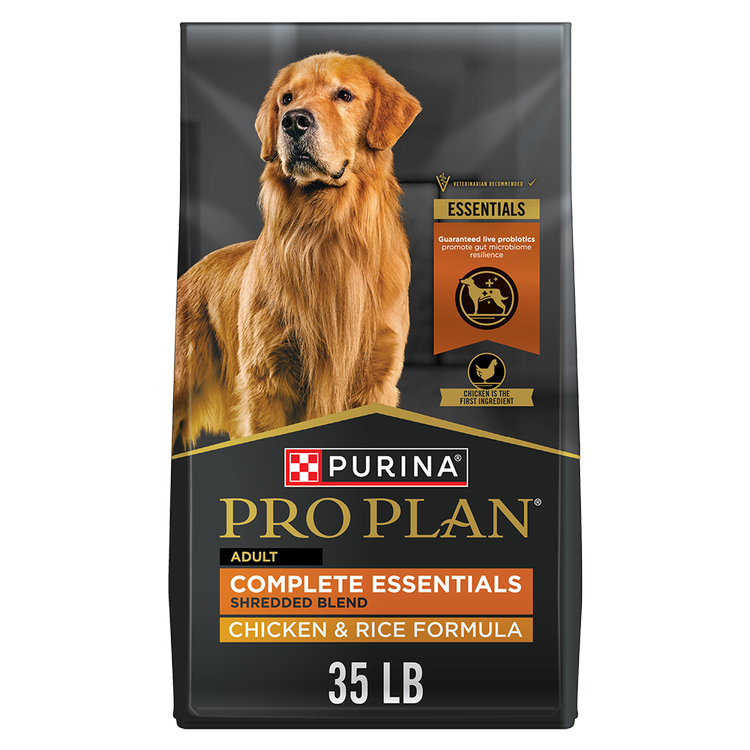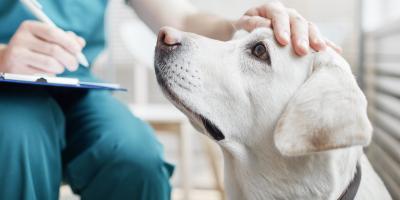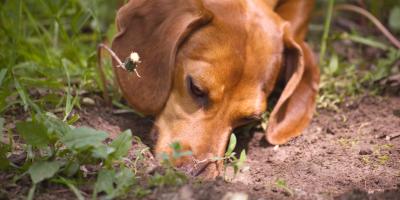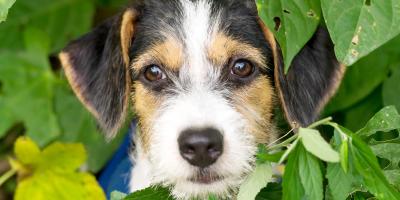Whether it’s April or May and all the spring flowers are blooming and calling for your dog to play in, or you want to start collecting a few plants indoors to cozy up with your dog while it’s cold outside, you’ll need to know the plants and flowers poisonous to dogs to surround yourself only with plants and flowers not toxic to dogs.
Our experts explain the dangers of some of the plants harmful to dogs while providing information on common plants that can be found in gardens or households and may harm dogs if ingested.
We share 26 of some of the most common dangerous plants for dogs. We also provide the information needed to help identify if you’ve encountered some of these most poisonous plants for dogs and to help take necessary steps to keep your pets healthy.
House Plants Poisonous to Dogs
Some houseplants may seem safe for your home, but they’re dangerous for your canine friend. Here are a few poisonous houseplants, including a few holiday plants, to look out for.
Aloe Vera
Aloe vera might be edible and great for human skin but know that it’s among the list of toxic plants for dogs to ingest. Aloe and dogs don’t mix. Dogs who ingest aloe vera might experience vomiting, diarrhea and dehydration. Also, it may be toxic if your dog happens to lick any of your skin if you ever apply it to yourself. While symptoms might be mild, avoiding having any form of aloe vera in the house with a dog around is a good idea.
Eucalyptus
Eucalyptus plants and oil are also oft-enjoyed household plants that can be poisonous to dogs despite being used in alternative flea treatments, which are not guaranteed to work and are unsafe. If a dog eats eucalyptus, signs of eucalyptus poisoning in dogs may include diarrhea, vomiting, or seizures. If you think your dog has consumed eucalyptus, contact your vet immediately.
Poinsettias
Poinsettias are a popular flower for bringing holiday cheer, but they’re among flowers toxic to dogs. More specifically, their leaves are poisonous to dogs. They can cause a few symptoms including but not limited to nausea, diarrhea, irritation of the esophagus, irritation of the mouth, and vomiting. Monitor your dog’s symptoms and call your vet for any concerns.
Mistletoe
Mistletoe is another decorative holiday plant that is toxic to dogs. Though a popular choice for Christmas decorations, using a plastic variety for safe and joyous decorations may be a good idea. The toxic ingestion in dogs may result in vomit, drool, dehydration, and possibly dramatic drops in heart rate and blood pressure. Mistletoe ingestion can be fatal, so it’s a good idea to call your vet when you suspect your dog may have eaten any.
Outdoor Plants Poisonous to Dogs
To safeguard your furry friend from encountering dangerous plants, here are a few common outdoor fruit and flowering plants and shrubs poisonous to dogs.
Lilies
A few varieties of lilies are poisonous to dogs. They can cause dogs irritation of the digestive tract, irritation of the mouth, seizures, reduced heart rate, and possibly death, among other symptoms. Here are a few types of lilies to watch out for and symptoms they may cause:
- Peace Lily: Causes severe mouth irritation
- Rain Lily: Causes gastrointestinal upset
- Calla Lily: Also causes severe mouth irritation
- Lily of the Valley: While not a true lily, it can cause heart arrhythmias and irritate the gastrointestinal tract
Daffodils
Dogs and daffodils don’t mix. Daffodils are poisonous for dogs to eat; signs of plant poisoning in dogs may include diarrhea, lethargy, drooling, trembling, abdominal pain, vomiting, and possibly death. A dog just brushing up against them can also cause skin irritations. All parts of the daffodil plant are potentially toxic, containing a poisonous substance called lycorine, but the bulb is the most harmful. If you suspect your dog ate any number of daffodils, contact your vet as soon as possible.
Ivy
Ivy is an invasive plant that may be hard for your pup to avoid when roaming outside. The good news is that most dogs don’t enjoy the taste of ivy, so they’re unlikely to eat it in very harmful amounts. Regardless, make sure your dog avoids all parts of ivy. Its leaves, vines, berries, and flowers are all toxic to dogs. It can cause a range of digestive upset if eaten and skin irritation if there’s skin contact with the plant. Some types of ivy to avoid may include:
- Common ivy (English ivy)
- Devil’s ivy
- Poison ivy
Geraniums
Geraniums are common container plants that can thrive indoors or outdoors. Regardless, make sure your dog avoids contact with geraniums. Geraniums, toxic to dogs, may cause your dog to experience a range of symptoms, including loss of appetite, skin rash, low blood pressure, or lethargy. Contact your vet if you think your pup may have eaten any geraniums.
Primrose
Primrose gets planted in many home gardens, and you must ensure your dog avoids it. If your dog eats primrose, poisoning symptoms may include diarrhea and vomiting. If your dog’s skin or eyes encounter primrose, they can get irritated. Contact your vet if you think your dog may have had any contact with primrose.
Bluebells
All bluebell plants you may encounter on a walk, even those that aren’t blue, are toxic to pups. These plants contain glycosides, which are a poisonous chemical to dogs. The bulbs of the plant have the highest concentration of glycosides. Regardless, you must contact your vet if you suspect your dog may have eaten any part of a bluebell plant. Signs of poisoning in dogs can include lethargy, diarrhea, reduced heart rate, vomiting, trembling, drooling, or skin irritations.
16 More Poisonous Plants to Dogs to Be Aware Of
Here are a few more to add to the list of poisonous plants for dogs to eat:
- Cherry pits, leaves, and stems
- Grapes
- Macadamia nuts
- Walnuts
- Lemons
- Avocado skin, leaves, and pits
- Tomato stems, tomato leaves, and green or unripe tomatoes
- The tomato plants toxic to dogs the most are those that are unripe
- Onions
- Garlic
- Rhubarb
- Coffee beans
- Raw or boiled potatoes
- Tea leaves
- Wild berries such as:
- Holly berries
- Mistletoe berries
- Salmonberries
What Are the Signs of Plant Poisoning in Dogs?
Symptoms of dog poisoning from plants can include the following:
Symptoms vary depending on the plant ingested, and may even be deadly. Because it’s possible to encounter plants lethal to dogs, you must call your vet whenever your dog has eaten or brushed up against any plant they shouldn’t have.
What to Do if My Dog Eats a Poisonous Plant?
If a dog has ingested a poisonous plant, the first and most important tip is to seek veterinary care as soon as possible and bring your pup in for a checkup if necessary. Watch for the symptoms of plant poisoning mentioned above and reach out to your veterinarian as soon as possible if you notice any.
If possible, it may be a good idea to take a picture of the plant your pet ate or encountered to ensure they receive the best treatment.
Dog-Friendly Plant Resources
Of course, there are a lot of plants we haven’t mentioned here that you may be wondering about. One great best-practice resource to consider if you’re shopping for a dog-friendly plant is the ASPCA’s Poisonous Plants list.
How to Keep Dogs Away from Poisonous Plants
The best way to keep dogs away from plants that are poisonous is to ensure they avoid them. Don’t purchase the plants mentioned in this article for your home, and take a different walking route if you see any of the plants mentioned so as to encounter only safe bushes for dogs. Buy only dog-safe flowers and plants for your home.
A secondary solution might be to place indoor poisonous plants for dogs as far out of reach as possible on a tall plant stand or a shelf and to put a barrier between your dog and any outdoor poisonous things for dogs. Make sure it’s a barrier your dog can’t penetrate; that way, your dog may only encounter plants that are dog safe.
For more expert tips on caring for your dog, explore our other dog routine care articles.
Related articles

Reward Yourself with myPurina
Earn and redeem rewards for Purina products with the myPurina app.








